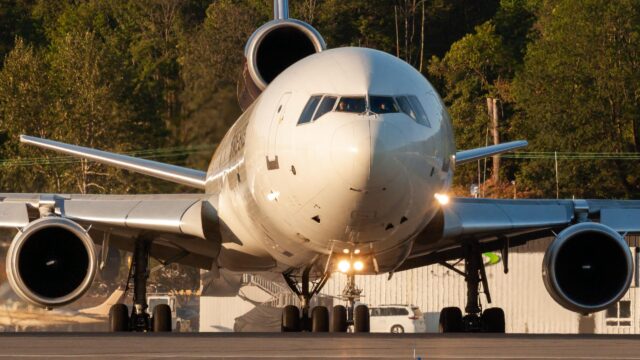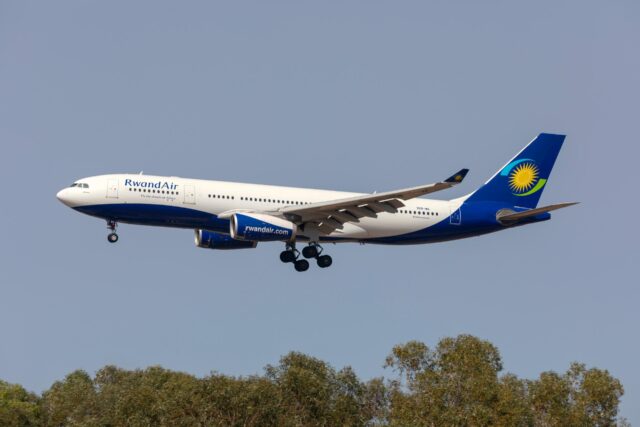The Avro Vulcan: A remarkable journey from Cold War icon into the heart of a nation

November 9, 2025

Tuesday, 28 October marked the tenth anniversary of the last airworthy Avro Vulcan’s final flight. The aircraft, carrying tail number XH558 and named ‘The Spirit of Great Britain’, now survives in retirement after a varied service career lasting over 55 years.
Standing as a testament to the British aerospace industry and a legacy to the companies that helped design and build the Vulcan bomber, XH558 still welcomes visitors to take a look around and learn about aviation in the Cold War era.
However, the ongoing preservation of such an iconic aircraft comes at a price, and the organisation that looks after her is facing a funding crisis.
Aerospace Global News was invited to visit XH558 at its home at Doncaster Sheffield Airport (DSA) in the north of England. Owned and preserved by the Vulcan to the Sky Trust (“the Trust”), Marc Walters, the Trust’s CEO, explained about the history of XH558, the efforts being taken to preserve her for future generations, and the challenges that such a responsibility presents.
A brief history of the Avro Vulcan Bomber
With the clouds of World War Two clearing and the extent to which the Royal Air Force’s (RAF) effort had been integral in bringing the conflict to an end becoming clear, the UK decided that the RAF should maintain a fleet of nuclear-capable bombers to act as a viable deterrent to prevent future wars.
The tender for such an aircraft issued by the UK Ministry of Supply called for an aircraft that could be deployed anywhere in the world, with a range of 4,000 miles (6,437km) and capable of carrying a single 4,536kg (10,000lbs) nuclear bomb.
Any such aircraft also had to be able to drop its weapon from altitudes of 13,715m (45,000ft) to evade attack from either the air or the ground.
Three designs were submitted in response to the tender – the Vickers Valiant, the Handley Page Victor, and the Avro Vulcan. Collectively, this trio of aircraft later became known as the ‘V-bombers’ by RAF Bomber Command.
The delta-winged Avro Vulcan was the second of the three to enter service, with the prototype aircraft having its first flight in August 1952. After several modifications, the first production aircraft (the Vulcan B Mk 1) subsequently took to the skies in February 1955.
Designed to carry a crew of five, the weapons bay could accommodate a ‘Blue Steel’ nuclear device or twenty-one 454kg (1,000lb) bombs.
Later versions featured the addition of electronic countermeasures (ECM) equipment, upgraded power plants in the form of Rolls-Royce Olympus turbojets, and a larger wing.
An auxiliary power unit and air-to-air refuelling capability were also added, with the newly upgraded models designated the Vulcan B Mk 2, entering RAF service in 1960.
With the development of the submarine-launched Polaris nuclear missile in the 1960s, the Vulcans took on other roles in the RAF, including more conventional bombing tasks, air-to-air refuelling, strategic reconnaissance, and long-range attack.
The type remained in RAF service until the mid-1980s and playing a major role in the UK-Argentina Falklands War of 1982.
While many were retired and eventually broken up, a small number were retained to become exhibits in air museums to preserve the legacy of the Vulcan bomber.
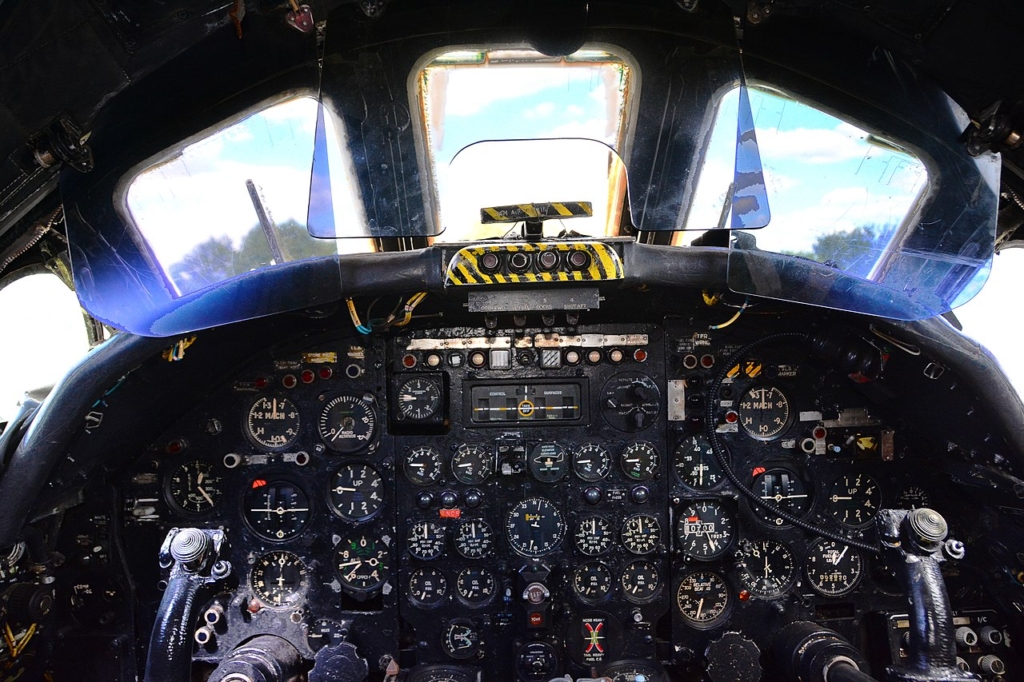
The air crews that flew the Vulcan during the nuclear era knew that they had one decisive job – to drop their bomb on the target designated by their superiors.
However, those crews also went to work knowing that should they ever drop their weapon in response to a hostile nuclear attack, there would likely be nowhere to come back to after their mission was complete. A global nuclear war would have erupted in the meantime, with mutual total destruction being the likely outcome.
In total, 136 Avro Vulcans were built, including two prototypes and 134 production aircraft. Production took place between 1955 and 1965, with 45 of the initial B.1 design and 89 of the updated B.2 design being manufactured during that time.
The service history of XH558
The RAF serial number XH558 was first reserved back in 1954 when a further order of 35 Vulcan B.2 Mk. 1s was placed with Avro by the Ministry of Supply (MoS). This was before the MoS took up the title of Ministry of Defence and the well-known acronym ‘MoD’.
XH558 was actually the twelfth airframe on the B.2 production line. But due to other aircraft undergoing modifications, upon completion, XH558 became the first B.2 aircraft ready for service delivery and made her maiden flight at Woodford near Chester, UK on 25 May 1960.
The following month saw a series of short test flights before Avro’s Chief Test Pilot, Tony Blackman, made the one-hour and 40-minute delivery flight of XH558 to RAF Waddington in Lincolnshire.
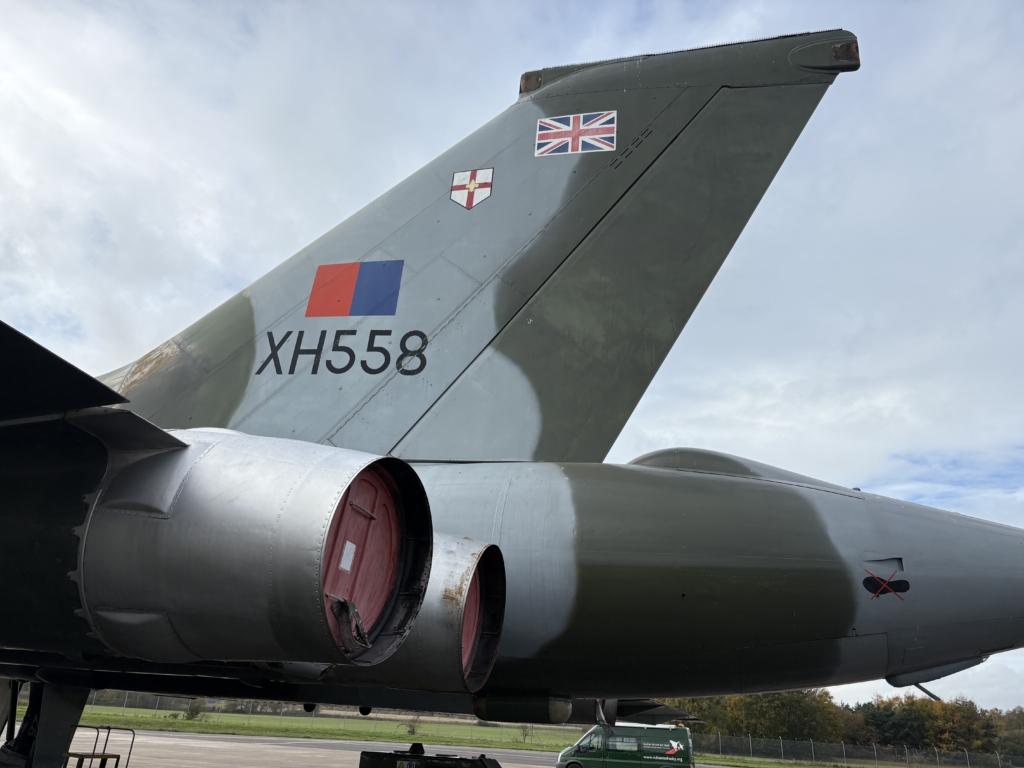
XH558 arrived at Waddington on 1 July 1960 to join the 230 Operational Conversion Unit (OCU), tasked to train pilots converting from the Vulcan Mk 1 to the upgraded Vulcan variant. As with the majority of Vulcans at the time, the aircraft was painted in ‘anti-flash’ white, a scheme designed to help reflect the heat from a nuclear blast.
Over the next twelve months, XH558 was used heavily in training three new squadrons, which were to be established as the ‘Scampton Wing’. The aircraft was later positioned at RAF Scampton to participate in a Bomber Command dispersal exercise, ‘Mayflight’, giving an insight into how the aircraft could be quickly deployed to several other locations to protect from the perceived threats to their own operating base.
This was to prove the concept of rapid dispersal to see how the aircraft and their personnel could cope with remote operations, and additional airfields were allocated to the crews as alternatives in the time of rising tension.
During June 1961, the 230 OCU transferred to RAF Finningley in Yorkshire (later to become Doncaster Sheffield Airport). The air base would remain her home for the foreseeable future, and in 2007, would eventually become her place of retirement.
While RAF Finningley has since been transformed into a modern international airport (although it is currently closed), from 1915 to 1996, it was an operational station of significant importance. At the end of the 1950s, work was carried out on the base to enable it to operate as a V-bomber station.
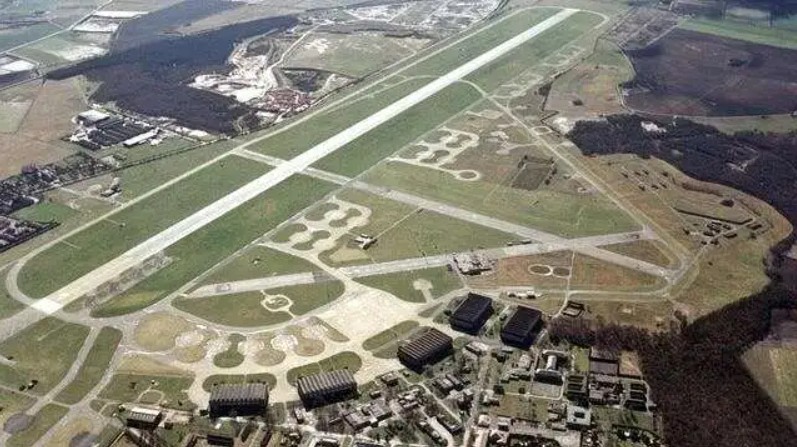
The airfield became known as the home of the V-bombers after Avro Vulcan, Handley Page Victor, and Vickers Valiant aircraft had all been stationed at the base, with XH558 operating on this site between 1961 and early 1968.
Serving as a strategic bomber during the height of the Cold War, XH558 participated in training exercises and strategic surveillance, and airborne patrols, playing a crucial role in acting as a deterrent against potential aggression from the Soviet Union.
The aircraft was finally withdrawn from service in September 1984 and was placed into storage.
RAF Vulcan Display Flight (1985-1992)
After XH558 retired from active service, it found a new lease on life as part of the RAF’s Vulcan Display Flight (VDF). XH558 performed at airshows across the UK with the VDF.
However, as a result of budget cuts, the MoD decided to discontinue the VDF in 1992, as the organisation simply could not justify the cost of maintaining a single (and expensive) aircraft type simply for display purposes.

With the closure of the VDF, the MoD planned to scrap XH558, which by then was the last airworthy Vulcan B.2 aircraft. The aircraft was ferried from Finningley to the former RAF air base at Bruntingthorpe in Leicestershire to await her date with the scrappers.
Post-Retirement Preservation (1993-2007)
On 23 March 1993, XH558 landed at Bruntingthorpe Airfield after a flight that was considered by many to be her last. However, given the Vulcan’s legendary status and the fondness in which it was held, the British public had other ideas.
Following the signing of a petition by 100,000 supporters led by the Friends of 558 organisation being handed into Number 10 Downing Street, London (the home of the then UK Prime Minister, John Major), the aircraft was given a stay of execution, but only if a new owner/investor could be found.
The private Walton family, avid aviation enthusiasts, fans of the Vulcan, and local to Bruntingthorpe, stepped forward and submitted a proposal to save XH558. When their offer of [£xxxx] was accepted by the MoD, they acquired not only the aircraft itself, but also 600 tons of spares and two new Rolls-Royce engines as part of the deal.
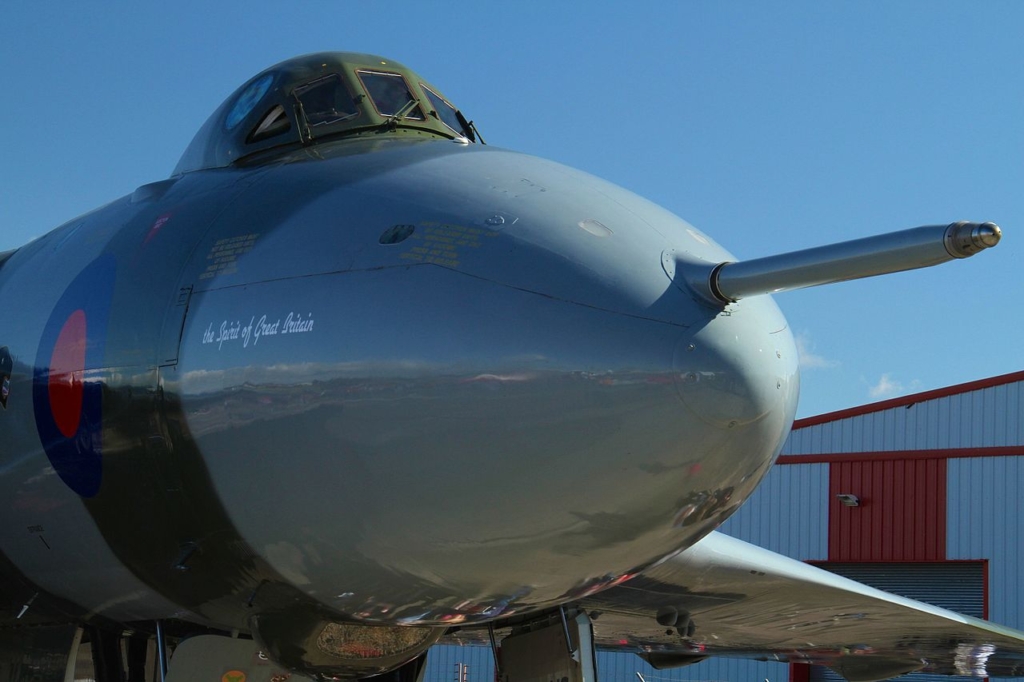
However, not content with just owning a grounded piece of aviation history, in 1997, David Walton set about examining the potential for XH5598 to fly again. With the help of Dr Robert Pleming, the Trust was established to oversee and help fund XH558’s return to flying status.
The primary aim of the Trust was to gather enough engineering expertise to return XH558 to the skies, with many volunteers (many who had worked on Vulcans in their RAF days) stepping forward. Secondly, the Trust had to raise enough money to secure XH558’s Permit to Fly (PTF) from the UK Civil Aviation Authority (CAA), which would allow it to return to the air show circuit.
XH558 returns to the skies (2007-2015)
In 2007, the mission to return Vulcan XH558 to the sky was complete, thanks in large part to the generous support of thousands of individual Vulcan fans who had contributed to the extensive fundraising efforts over the previous decade.
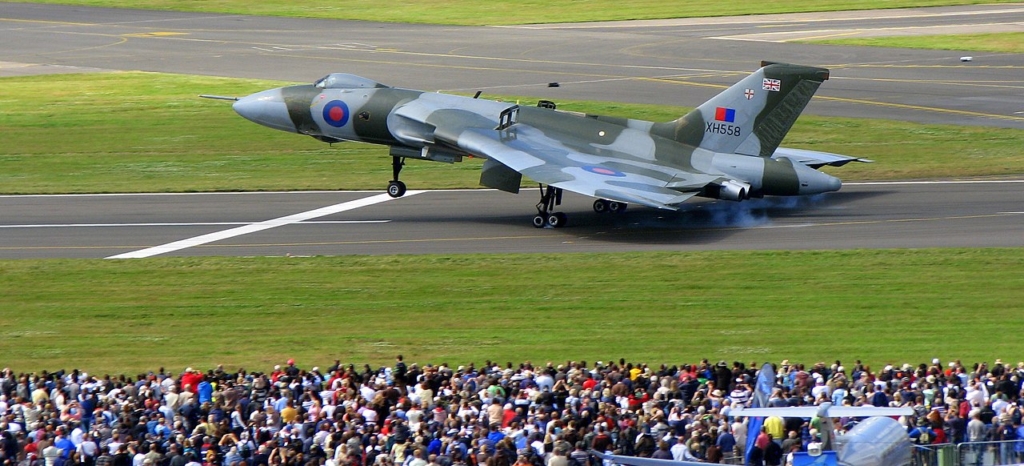
Following one of the most complex and demanding heritage aviation restorations in history, millions of people were able to enjoy the sight and sound of the Avro Vulcan again. XH558 went on to fly for eight more years, performing a second display career that many people never expected to see. However, in 2015, it would all end.
The final season of flying
At the start of the 2015 flying display, the Trust was advised that the season would be the last for XH558. As the aircraft flew as a Complex category ex-military aircraft on its PTF, a condition of the Complex category is that the aircraft’s original equipment manufacturers (OEMs) were contracted as a Design Authority to provide ongoing airworthiness design support.
By 2015, the input from the three members of the Design Authority (BAE Systems, Rolls-Royce, and Marshall Aerospace) was limited as the engineering capability within the VTST had developed. However, their support remained a legal requirement for the retention of the PTF.
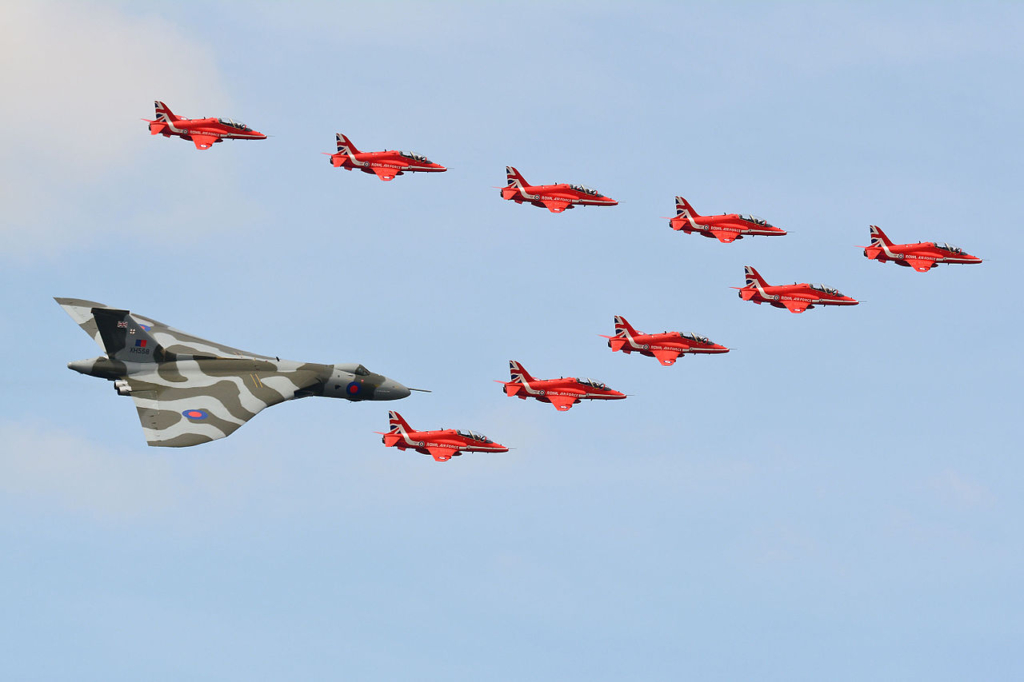
The acknowledged reason for this is that in the case of a serious incident, the CAA wanted the OEMs to shoulder the airworthiness responsibility for the aircraft.
However, at the start of the 2015 display season, the OEMs notified the Trust that this support was to be withdrawn at the end of that year, as they felt that they could no longer find people with sufficient expertise to help keep the aircraft flying.
Despite extensive efforts of the Trust to address this issue, in the end, it was reluctantly accepted that the OEM’s decision could not be changed. Instead, the focus concentrated on putting on the best farewell display season possible.
XH558’s final flight
On the afternoon of 28 October 2015, with the inclement weather of the morning clearing, XH558 taxied out to the hold of runway 02 at Doncaster Sheffield Airport, for what would become her final ever flight.
XH558 took to the air, keeping low over the length of the runway. After a change in direction and a few circuits of the airfield, she carried out a low pass, then touch-and-go.
After 15 minutes in the air, the stunning final display ended with the aircraft landing for the final time on the long, ex-military runway, her brake parachute billowing in the slipstream. As the aircraft taxied back to parking, the airport fire crews gave XH558 a traditional water cannon salute.
Regrettably, the final flight had to be kept secret for the safety of the public as South Yorkshire Police feared the commercial airport being overwhelmed by Vulcan fans and supporters. Fortunately, the entire flight was captured on film for future generations to experience and enjoy.
XH558 in retirement
Since its final flight, the XH558 story has been through a turbulent time. Throughout, the Trust’s main intention has always been to raise enough funds to keep the aircraft as accessible to the public as possible.
This is to protect the legacy of the Vulcan and the other V-bombers and the role they played in protecting the UK in the Cold War.
Upon retirement, the aircraft returned to its hangar at Doncaster Sheffield Airport to remain under the care of the Trust. Fundraising efforts and public events, along with merchandise sales and donations, all helped contribute to funding her upkeep and preservation. People got married under the wings of XH558, bands played concerts, and well-attended VIP events and black tie dinner dances all helped keep the funds rolling in.
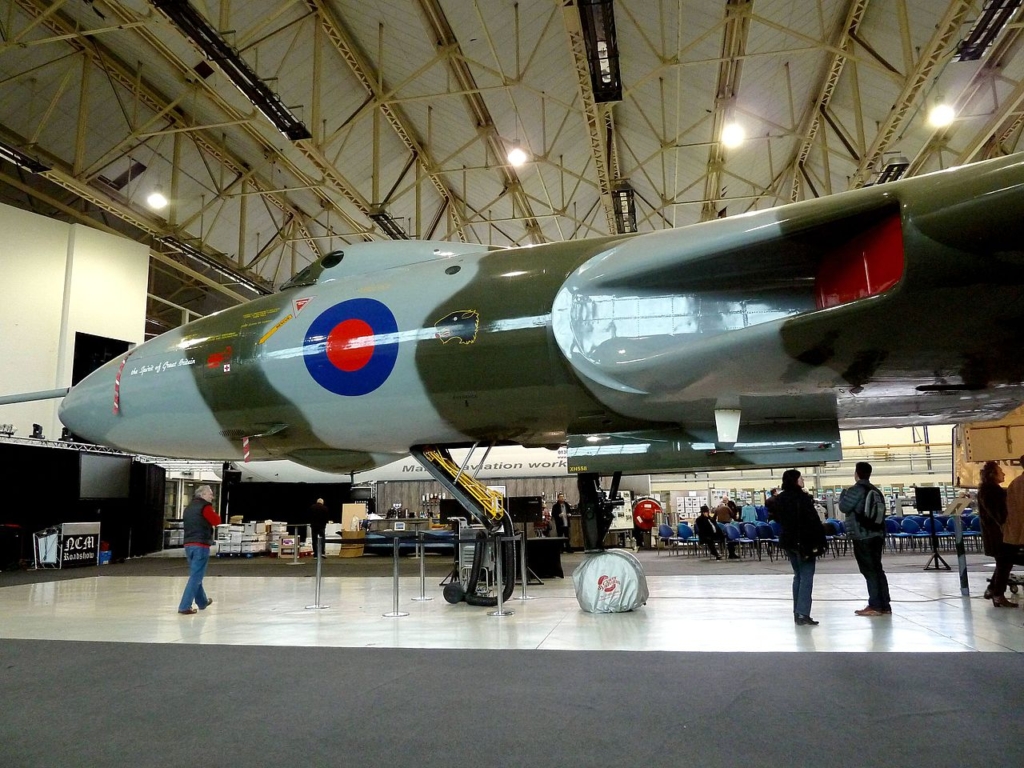
Initially, the arrangement with the airport owners, [Peel Airports], to keep XH558 hangared worked well. Then, in 2016, with the lease on the Vulcan’s hangar ending, and the airport’s commercial activities growing, the decision was taken not to extend the Trust’s lease. This decision led to XH558 being evicted from her home, and the Trust effectively without a base.
The Trust worked tirelessly to secure an alternative site on the airfield and moved into temporary accommodation in the meantime, with XH558 having to remain outside in the interim.
Although an alternative site had been identified, this was eventually deemed unsuitable for the Trust’s requirements. While outdoor tours of the aircraft could still go ahead, the events calendar had to be severely curtailed, with the resulting massive loss of income to the Trust.
In 2017, without the incremental revenue from functions due to the lack of a permanent home, the Trust was forced to launch an urgent funding appeal. It was forecast that £2.4 million would be needed to construct new premises to accommodate XH558 and the Trust, yet despite a £400,000 grant from the local authority, more was needed.
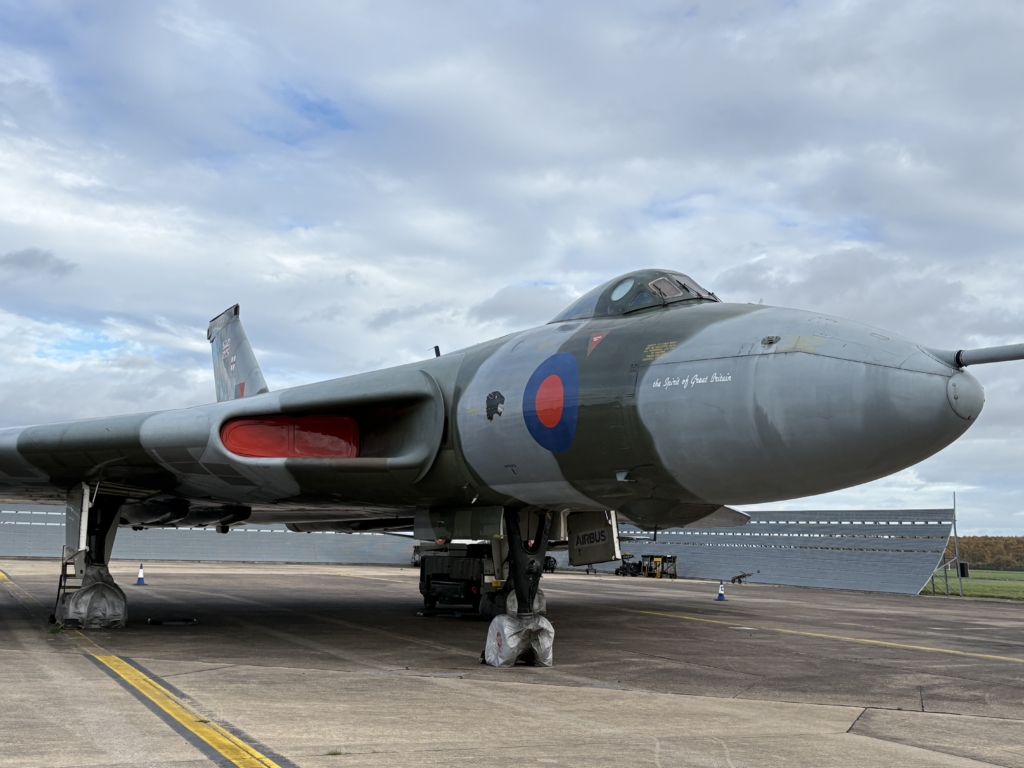
Thankfully, enough funds were raised to keep the Trust operating in the meantime while a solution could be found to the permanent accommodation issue.
Then, in early 2020, everything would change again for the Trust. With the COVID pandemic closing everything down, the Trust’s remaining activities also ground to a halt. With no regular income coming in from tours, the reliance on remote fundraising grew.
One idea was to allow donors to have their names printed on the underside of XH558’s fuselage – a campaign that has been so successful that nowadays over 100,000 names are currently displayed on the hull of the aircraft.
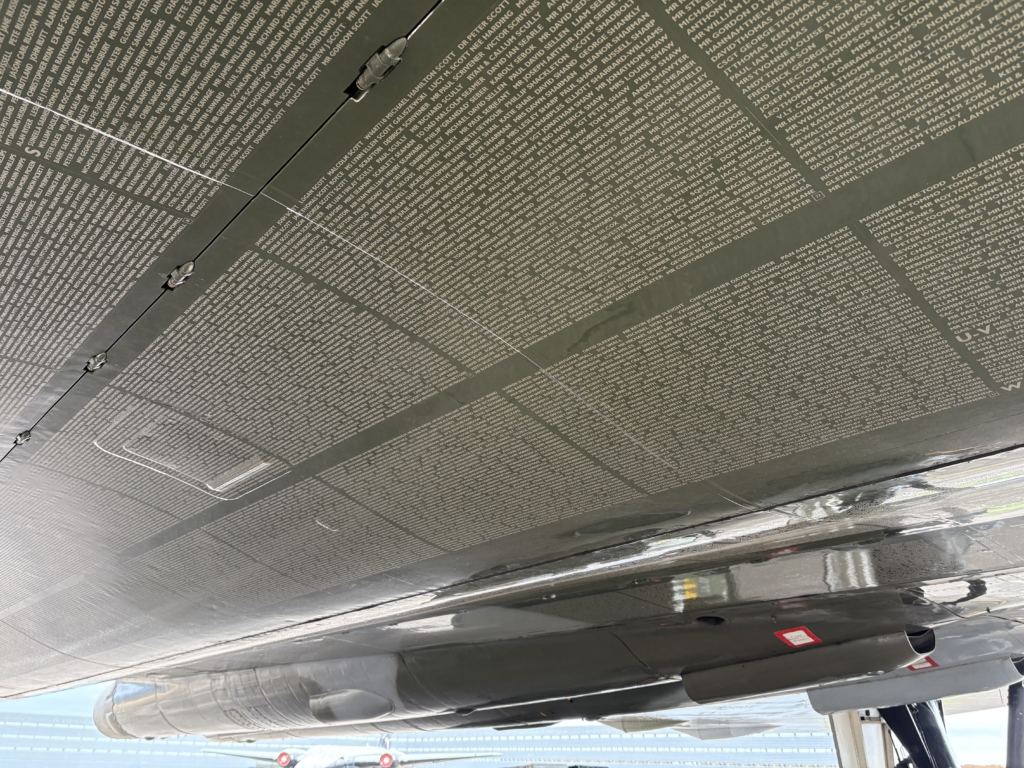
Sadly, in 2021, Dr Robert Pleming, co-founder and former CEO of the Trust, passed away, with a large question mark hanging over the future of the organisation he was integral in setting up and also over his beloved XH558.
As the world emerged from lockdown, tours of the Vulcan restarted. Then, in 2022, the airport owners advised the Trust that it needed to leave the airport completely and remove XH558 from the site. Ground runs of the aircraft’s four jet engines, always a draw for aircraft enthusiasts and the public alike, also had to be halted, leading to a massive loss of income, estimated by the Trust at around £230,000 to date.
Although unknown to the Trust at the time, the airport’s owners had decided that it had become economically untenable and was to close completely later that year.
The Trust began looking for other sites, including those that might want a complete Vulcan on display. Although two possible sites were identified, any such move would have involved XH558 being dismantled and transported by road at a cost of around £750,000 – an unfathomable amount of money.
However, with the local council already talking about exploring ways to reopen the airport and also to support the Trust, the plans to move the aircraft were put on hold.
The future for XH558
With the airport now under new management, the [name of organisation] announced earlier in 2025 that the airport would reopen to commercial airline traffic.
Additionally, a new site has been identified for the Trust to build a new facility to house XH558 and establish a new ‘Vulcan Experience’ which will be open to the public throughout the year. Planning for this facility is already underway.
The Trust is hoping that at least 50,000 visitors will come to the new facility annually once it is open, providing much-needed funds.
Alongside the return of special events and functions held under the expansive wings of XH558, it is also hoped that, in time, and with extensive testing beforehand, the lucrative and much-loved engine runs will return, providing another stream of revenue to keep the programme of preservation supported.
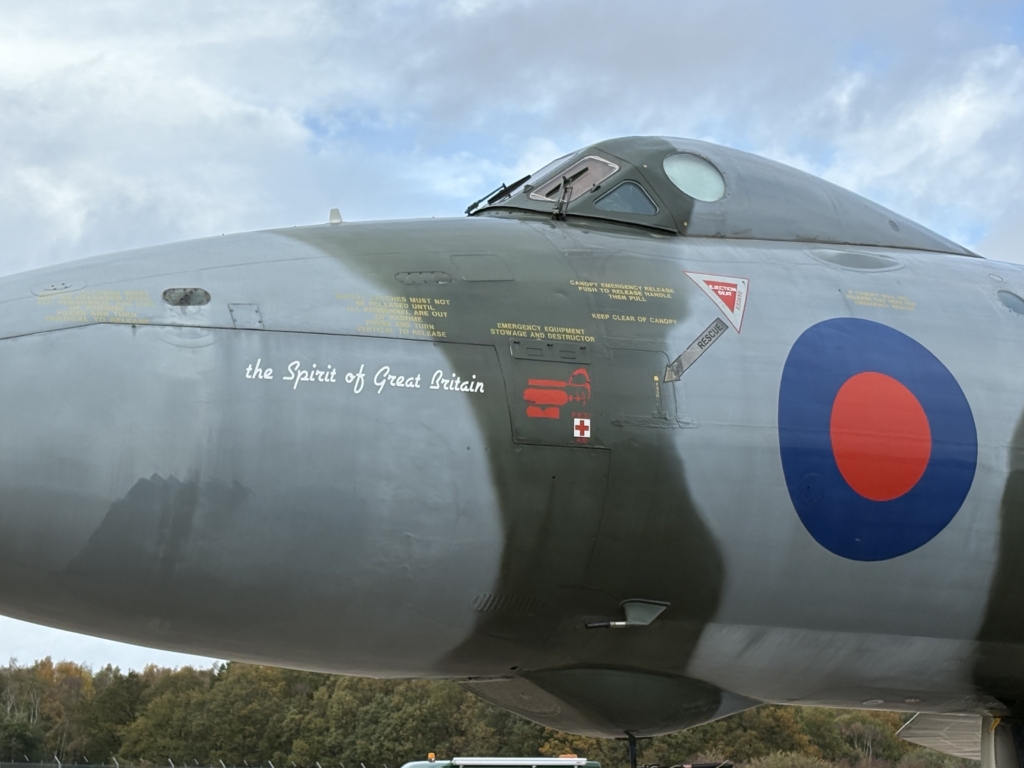
In the meantime, the Trust carries on with aircraft tours at weekends, its social and community outreach programmes to educate and inform the public, selling merchandise via its online shop, and of course, through donations and grants.
Additionally, to bridge the funding gap between now and when the Vulcan Experience opens, the Trust recently launched an urgent funding appeal through its website.
The plan is to raise enough to keep the work of the Trust continuing until that time, with the appeal being only the second time that an urgent funding request has had to be launched (the last one being in 2017).
That said, after years of upheaval and disruption, there is finally some light at the end of the tunnel for both the Trust and for XH558, which, after spending years outside, should finally get to come in from the cold.
The four main aims of the Trust
While the Trust awaits the reopening of the airport and the establishment of the proposed Vulcan Experience facility, Marc Walters, CEO of the Trust, explained why the work of the organisation is so valuable and why it is so important for it to continue, despite its current funding challenges.
“There are four key principles of the Trust,” said Walters. “The first is to preserve and protect XH558 and return her to full ground working order for the benefit of the public.
“Additionally, we aim to demonstrate and display her to the public and to conserve and return to full working order other aircraft and engineering artefacts in general which are of significant heritage interest, and to maintain such in a purpose-built facility,” he said.
“Secondly, the Trust aims to advance the education of the general public in Avro Vulcan XH558, in aviation and engineering heritage, in its associated provenance, historical and social context, and in the strategy of deterrence, for the benefit of British heritage, and historical knowledge.”
“We do this with the help of our team of volunteers, many of whom actually flew and maintained the Vulcan during its service life and have personal experience and interesting stories to share.”
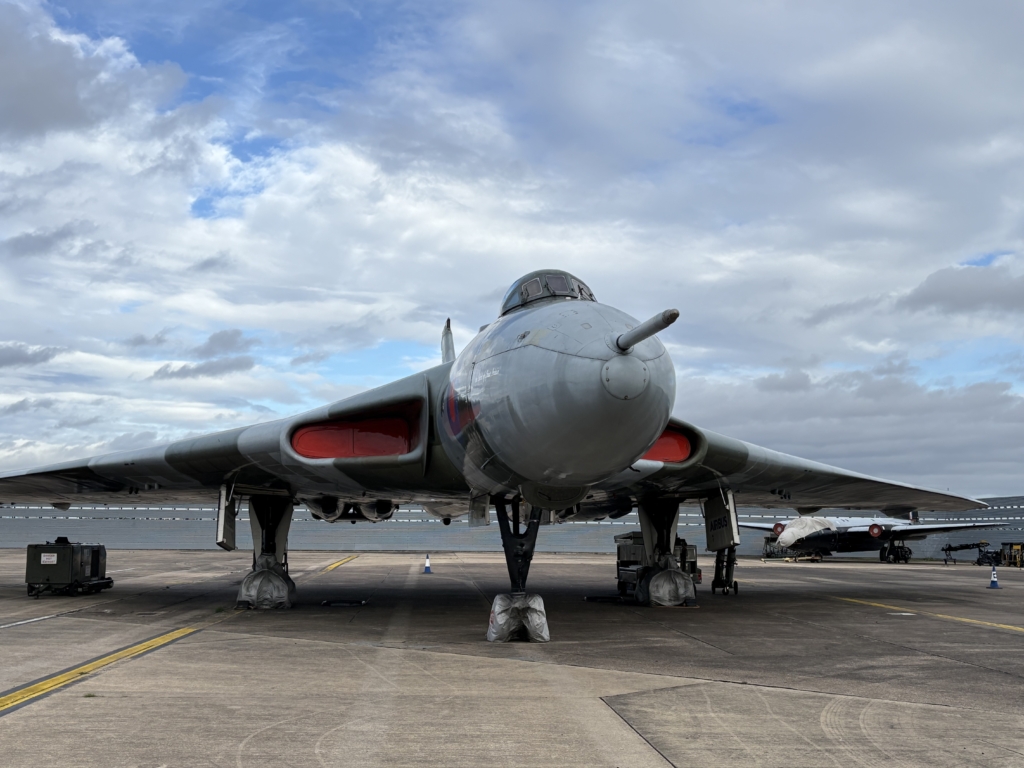
“Thirdly, the Trust also aims to advance the education of the general public in both XH558 and through other aircraft and engineering artefacts in general of significant heritage interest, in their design, engineering and technologies, operational and maintenance processes and procedures,” he added.
“We do this for the benefit of British heritage, technical knowledge, and conservation by providing access to engineering demonstrations and practical activities to inspire the aviators, engineers, and aeronautical designers of the future.”
“Lastly, we aim to advance the education of the general public in the causes of climate change, in particular by aviation, and in the solutions being devised to mitigate these causes, by providing explanations and demonstrations,” Walters concluded.
What the future for the last Avro Vulcan?
Although her flying days may be long behind her, and despite her current storage outside in the elements, XH558 still stands majestically as a monument to an era in aviation that should never be forgotten.
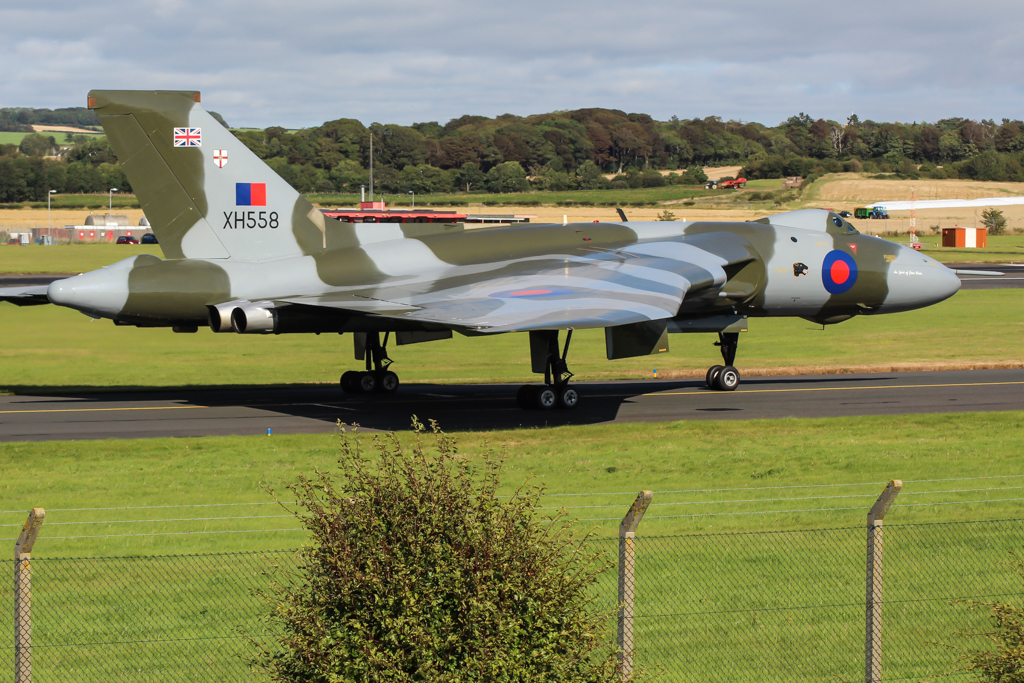
With her space-age design and her classic, sleek lines remaining as eye-catching as ever, XH558 remains in the safe hands of the Trust. With ambitious plans to see her return under cover and continue her retirement indoors, the public interest in the Avro Vulcan and XH558 in particular is unlikely to diminish, with the type’s legacy forever remaining firmly lodged in the aviation history books.

